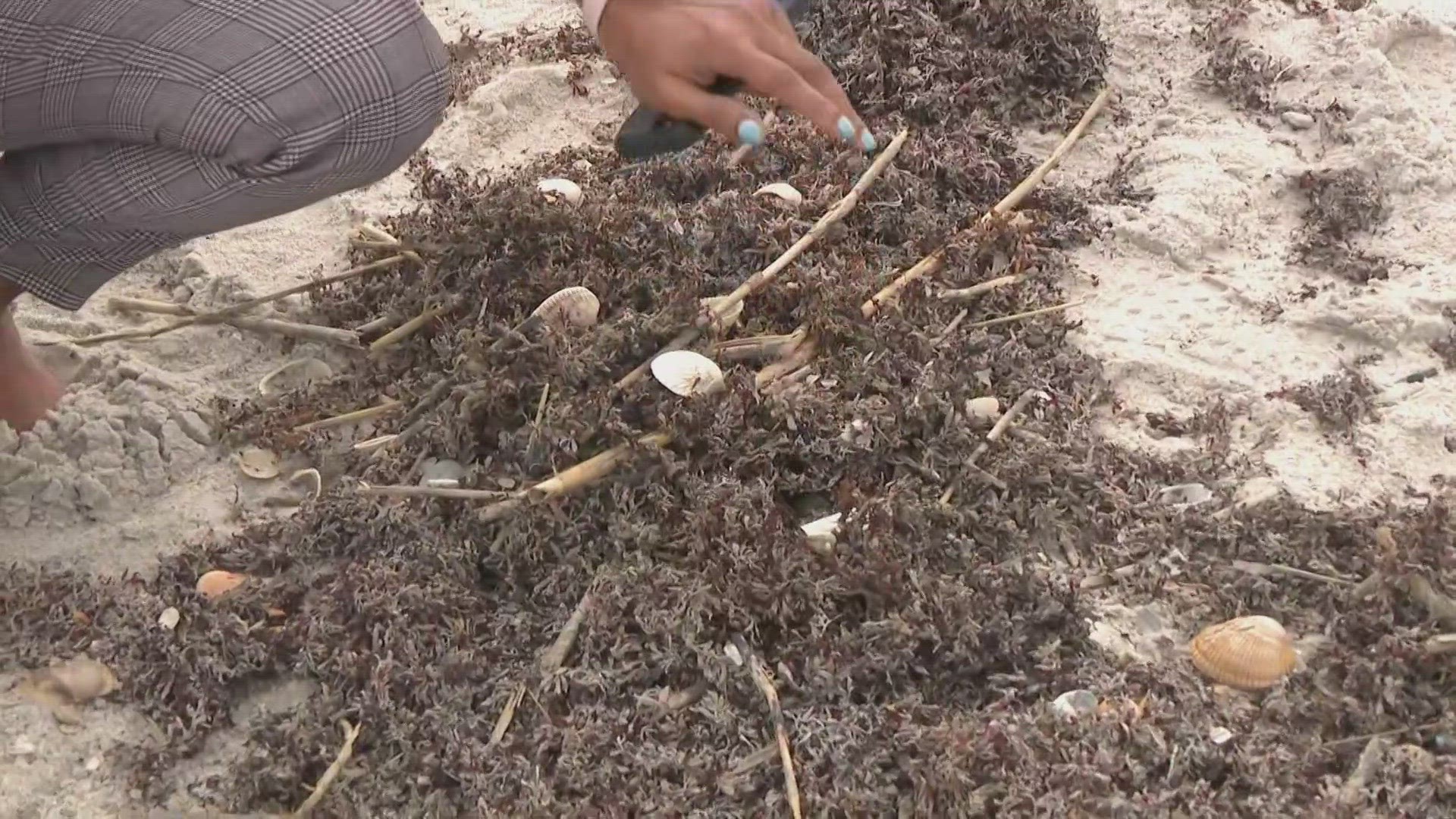JACKSONVILLE, Fla. — The seaweed blob known as the Great Atlantic Sargassum Belt has been cinched several notches.
According to new research by the University of South Florida, the size of the enormous floating seaweed patch dropped a whopping 75 percent in June – surprising even the scientists.
“Although last month we predicted a decrease in the Gulf of Mexico in June, the magnitude of the decrease -- 75% -- was beyond expectation,” the report says.
Researchers said they expect the trend to continue, "which should be good news to the residents living in the Florida Keys and east coast of Florida."
Sargassum is a type of macroalgae that occurs naturally in the North Atlantic, but has grown more abundant since 2011. This year, the quantity grew exponentially, spanning more than 5,000 miles and weighing in at 13 million tons.
At sea, sargassum provides a habitat for birds and fish. Near shore, however, it becomes a literal quagmire, hindering swimming and surfing, and emitting a stinking sulfuric odor that is unpleasant at best, and occasionally nauseating. It may also pose hazards because of the plastic waste it traps and transports.
Sargassum began appearing on the First Coast in late April, but in relatively minor quantities. In recent weeks, it has been mostly absent on local beaches.
“Looking ahead, because of the continued decreases of Sargassum in the Gulf of Mexico and Caribbean Sea and because the increases in the Central West Atlantic appeared to have slowed down, we predict that the Sargassum amount in the Gulf of Mexico will remain minimal, and in the Caribbean Sea will either decrease or remain stable,” the report said.
"This trend may continue in the next two to three months, which should be good news to the residents living in the Florida Keys and east coast of Florida as well as in the west coast of the Caribbean Sea. Nevertheless, impacts of Sargassum beaching events will continue to be felt throughout some of the eastern Caribbean Sea and possibly western Caribbean Sea regions, although it is difficult to predict exact timing and location for individual beaching events.”
Researchers said they “will continue to closely monitor and track Sargassum in each region, with more summary updates provided by the end of July 2023.”
Daily updates and near real-time imagery can be found at the Sargassum Watch System website.

